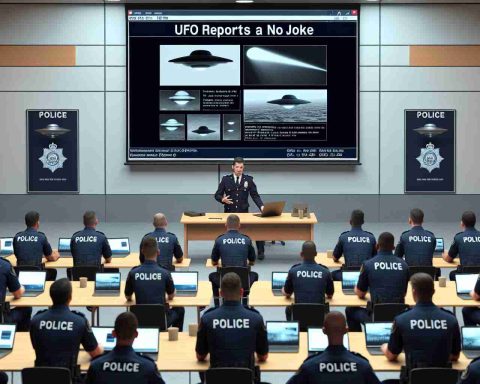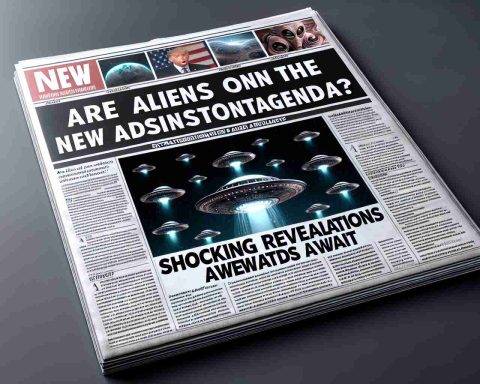Brussels, Belgium — The European Union has officially embarked on an ambitious new venture as it signed a significant contract for developing a high-tech satellite communication system, known as Iris². This project represents a strategic effort to establish a robust space-based network aiming to elevate Europe’s position in satellite communications, positioned to compete with industry giants like SpaceX’s Starlink and Amazon’s Project Kuiper.
Iris² plans to deploy nearly 300 satellites in various orbits to enhance communications security across the continent. The initiative is set to fortify critical infrastructure and bolster connectivity in remote regions, leading to greater strategic autonomy for Europe. An investment estimated at €10.6 billion will fuel this initiative, with funding coming from both public and private sectors.
The consortium, which includes major players such as Eutelsat and Hispasat, is keen to utilize this cutting-edge technology for military, diplomatic, and commercial purposes. Moreover, it aims to provide essential connectivity in areas affected by natural disasters.
As the EU pushes for digital sovereignty, experts have noted the urgency of this project, especially given the competitive landscape of satellite internet services. Unlike Starlink, which boasts a fleet of over 6,000 satellites, Iris² aims for a balanced performance with its smaller number of satellites through innovative multi-orbital strategies.
By 2030, the system will be fully operational, significantly contributing to Europe’s resilience and connectivity in an increasingly digital world.
European Union’s Iris²: A Game-Changer in Satellite Communication
Introduction to Iris²
The European Union has taken a bold step in satellite communication by launching the Iris² project, an innovative satellite communication system that aims to improve connectivity and security across Europe. In a landscape where companies like SpaceX’s Starlink dominate, this project is designed to enhance Europe’s strategic autonomy and competitiveness in the global digital arena.
Key Features of Iris²
1. Deployment Strategy:
– Nearly 300 Satellites: The Iris² initiative plans to deploy around 300 satellites across various orbits. This multi-orbital approach is aimed at creating a resilient network capable of providing extensive coverage without overwhelming congestion.
2. Investment and Funding:
– €10.6 Billion Investment: The significant financial backing for this project is expected to come from both public and private sectors, underscoring the importance of satellite communications for Europe’s future.
3. Consortium Collaboration:
– The project involves a consortium that includes prominent players like Eutelsat and Hispasat, which will leverage their expertise in satellite technology to ensure effective implementation and operation.
Use Cases and Applications
Iris² is not just a commercial endeavor; it offers a variety of compelling use cases:
– Military and Diplomatic Communication: The system will enhance secure communication channels for governmental and military applications.
– Natural Disaster Response: With enhanced connectivity, Iris² can support emergency services and facilitate communication in regions stricken by natural disasters.
– Broadband Access in Remote Areas: By improving connectivity in under-served regions, the project aims to bridge the digital divide across Europe.
Pros and Cons
Pros:
– Enhanced security in communications.
– Improved connectivity in remote and disaster-stricken areas.
– Increased strategic autonomy for Europe in digital infrastructures.
Cons:
– The ambitious scale of deployment could face technical challenges.
– Competing against established players like Starlink may require significant marketing and engagement efforts.
Market Analysis and Trends
In the current satellite internet landscape, the demand for resilient and secure connectivity continues to grow. As global reliance on digital infrastructure increases, initiatives like Iris² represent a critical response to emerging challenges—ranging from cybersecurity to the need for reliable communication in crises.
Predictions for the Future
As Europe advances towards a digital future, the Iris² project is set to be fully operational by 2030. This timeframe is significant not just for implementing technology but for positioning Europe as a leading player in the satellite communication market. Analysts predict that the success of Iris² could inspire similar initiatives in other regions, fostering a new era of competitive satellite communication solutions globally.
Conclusion
The Iris² project marks a pivotal moment in the evolution of satellite communications in Europe. Through substantial investment and a focus on innovation, the EU aims to secure its place in a digital-first world. For more insights on satellite technology and future communication trends, visit Euractiv.



















